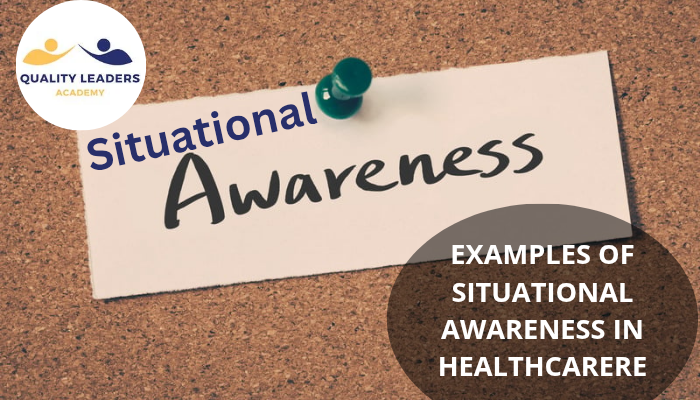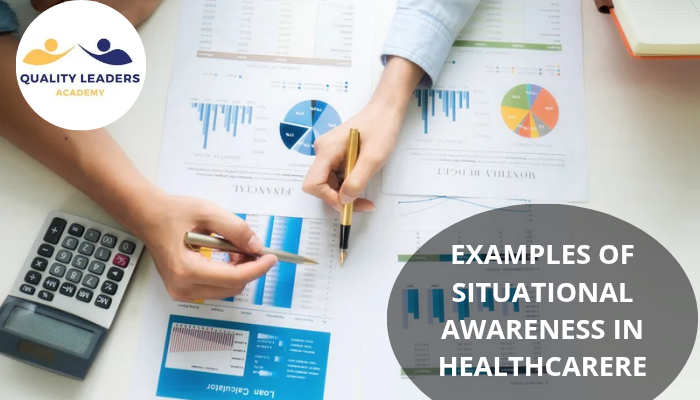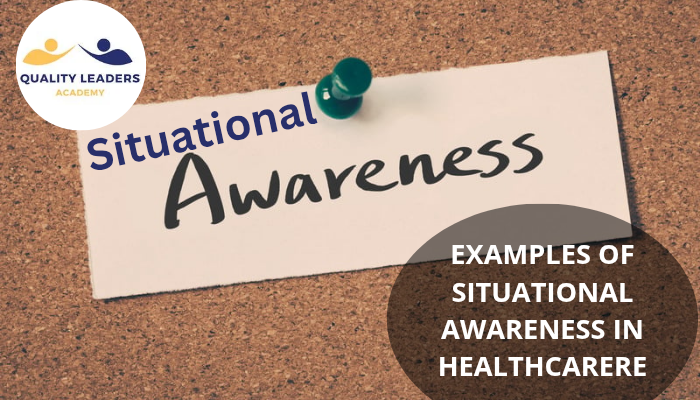Situational awareness (SA) is a crucial, often invisible force behind safe, effective patient care. It enables a nurse to spot early signs of sepsis, a surgeon to adjust during a complex operation, and a pharmacist to prevent a critical medication error.
According to a 2023 review published in Healthcare (Basel), SA is “a conscious mental model of clinical elements and their interrelations,” helping clinicians accurately assess situations and adjust goals in real time. In a world where delays or distractions can cost lives, situational awareness provides a reliable buffer against error.
In this article, we’ll explore examples of situational awareness in healthcare, backed by research and real-world outcomes, and we’ll offer practical insights on how to nurture it across clinical roles.
WHAT IS SITUATIONAL AWARENESS IN CLINICAL PRACTICE?

Situational awareness in healthcare means being fully attuned to your environment, patients, colleagues, equipment, and potential risks. It consists of three levels:
Perception:
Recognizing critical information (e.g., patient vitals, alarms, subtle physical cues).
Comprehension:
Understanding what that information means in the clinical context.
Projection:
Anticipating what might happen next if no action is taken.
Studies emphasize that SA is dynamic; it allows providers to immediately adapt to a changing clinical picture and modify interventions in real-time.
REAL-LIFE EXAMPLES OF SITUATIONAL AWARENESS IN HEALTHCARE
1. Nurses Detecting Early Signs of Patient Deterioration
At the bedside, nurses often act as the first line of defense. A great example shared by Wolters Kluwer involved a nursing student noticing a patient turning pale and becoming confused. Although the vital signs were still within normal range, the nurse recognized these subtle changes and called for help, leading to the early diagnosis of sepsis.
Why does it matter? This is SA in action, recognizing patterns and trusting one’s mental model to intervene before metrics turn critical.
2. Structured Communication Using SBAR
The SBAR method (Situation, Background, Assessment, Recommendation) enhances communication and reduces the risk of misunderstanding, especially during patient handoffs.
Example: A nurse reports to a physician:
- S: “Patient’s BP is dropping.”
- B: “Post-op day one from appendectomy.”
- A: “BP 85/50, HR rising.”
- R: “Request immediate evaluation for bleeding.”
Impact: Structured communication ensures all team members are aligned on the patient’s status, improving both comprehension and projection elements of SA.
4. Emergency Room Triage Decisions
ER nurses must rapidly assess dozens of patients while juggling interruptions and changing priorities.
Example: A patient arrives with mild chest pain but also shows subtle signs of poor perfusion. Although the case didn't seem urgent at first, the triage nurse reassessed the situation and raised the priority level. Minutes later, the patient suffers a cardiac arrest, caught early enough to initiate rapid resuscitation.
Good SA often comes down to catching the “invisible details” that don’t yet show up on paper.
5. Diagnostic Accuracy in General Practice
In primary care, distractions from electronic health records (EHRs) and time pressure can lead to diagnostic mistakes. Situational awareness enhances clinical judgment when dealing with uncertain or ambiguous situations.
Example: A physician notices a patient’s fatigue and abnormal lab results. Instead of dismissing it as anemia, the provider connects the dots to thyroid disease and requests further endocrine testing, catching a more serious condition early.
6. Situational Awareness in the ICU
In intensive care, where patients can decline within minutes, situational awareness is a matter of survival.
Example: A nurse notices a subtle alarm while conversing with a patient's family member. Trusting her intuition, she checks a patient’s arterial line and catches a disconnection that would’ve led to a fatal bleed.
This rapid response is not just technical skill, it’s vigilance, attention to subtle environmental changes, and experience blended into clinical awareness.
7. Medication Error Prevention in Pharmacies
Pharmacists often serve as the last checkpoint before treatment. When situational awareness is high, prescribing mistakes can be caught.
Example: A pharmacist flags an unusually high methotrexate dose for a child. Upon double-checking, they discovered a decimal error; 0.4 mg was written as 4 mg. This intervention prevented a potentially fatal medication overdose.
HOW TO IMPROVE SITUATIONAL AWARENESS IN HEALTHCARE TEAMS

1. Simulation-Based Training
Clinical simulations recreate high-pressure environments and force teams to adapt.
2. Checklists and Protocols
Checklists (like WHO surgical safety ones) help maintain focus and consistency. They reduce reliance on memory and promote shared team awareness.
3. Flatten Hierarchies
Motivate nurses, students, and junior doctors to voice their concerns and observations confidently. Situational awareness is a team effort, and psychological safety allows more people to notice and report early warning signs.
4. Mindfulness and Cognitive Load Management
Being mentally present and aware of one’s surroundings reduces tunnel vision. Teaching mindfulness, even in short modules, can improve attention and reduce missed cues.
A Hidden Skill That Saves Lives
Situational awareness isn’t just about paying attention—it’s about staying one step ahead. It allows clinicians to:
- Detect problems early.
- Communicate effectively.
- Adapt to dynamic situations.
- Prevent harm and improve outcomes.
SITUATIONAL AWARENESS: A CORE FOCUS IN CPHQ COURSES
Situational awareness is one of the most critical and emphasized topics in the CPHQ certification courses offered by Quality Leaders Academy. It plays a vital role in enhancing clinical judgment, improving communication, and preventing medical errors, core skills needed for today’s quality-focused healthcare professionals.
This important subject is explored in depth across three comprehensive learning tracks, allowing participants to choose the path that best fits their learning style and goals:
- CPHQ Focus Study and Review Full Package with Live Zoom Sessions
This course provides intensive study sessions covering the seven domains of the CPHQ exam, including patient safety and performance improvement. It features live interactive sessions, recorded lectures, quizzes, and real exam simulations to assess readiness.
CPHQ Focus Study and Review Full Package – Recorded Videos
Ideal for self-paced learners, this course offers comprehensive recorded lectures, quizzes, and exam simulations, allowing participants to study at their convenience while covering all essential topics, including situational awareness.
CPHQ Focus Study and Review – Examination Revision Cases
This course focuses on revision through case discussions and question bank reviews, providing participants with practical scenarios to apply their knowledge and enhance their situational awareness skills.
The previous explanation of examples of situational awareness in healthcare and research confirms that poor situational awareness contributes significantly to medical errors. Fortunately, it’s a skill that can be learned, trained, and built into systems.
From the bedside to the boardroom, situational awareness belongs at the core of healthcare education and practice.
Read also:



